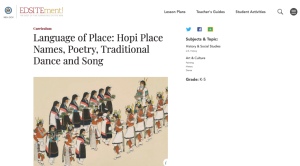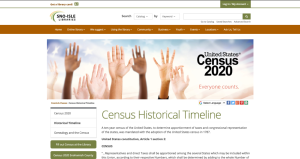General Interest
Back to Top
|
 |
|
Science Learning Hub
|
Science |
|
Launched as a part of the New Zealand Government's Science in Society Plan, Science Learning Hub bridges the gap between students, teachers, and scientists by curating thousands of resources that "demonstrate how the stories of science can be used to enrich school teaching and learning, making it more relevant, engaging, and meaningful." The website's landing page highlights trending topics and events, as well as featured articles and activities. The remainder of the site offers resources of interest to a variety of audiences. Educators may want to explore the Teacher PLD (professional learning and development) section, which features webinars, planning, and pedagogy to assist science teachers both in their professional advancement and their classrooms. The Citizen Science section collects resources for those interested in volunteering to "contribute to scientific projects, usually by collecting or analysing data." On the Explore Topics and Explore Concepts pages, readers will find information covering subjects from "reptiles and amphibians" to "science and society." These subjects can be sorted alphabetically or by popularity. After clicking on a topic or concept of interest, users will be led to a collection of related materials, which may include articles, videos, and activities. In the top right corner of each sub-page, visitors will find an "Explore+" button, which highlights similar topics and concepts. Readers with a particular subject in mind can also search by clicking the magnifying glass in the top right corner to open a query bar. [EMB] |
|





|
|
 |
|
 |
|
 |
|
 |
|
The Diary of Samuel Pepys
|
Social studies |
|
Transport yourself to 17th-century London with The Diary of Samuel Pepys, a daily diary kept by "increasingly-important" civil servant Samuel Pepys from 1660 to 1670, where he writes about everything from his business meetings to his wife's beauty and going out to the theatre. Readers looking for a brief overview may wish to begin with the Summary of Pepys's diary under The Diary tab, before browsing the full text of Pepys's diary by date (under All Entries). There is also a Letters section containing correspondances to and from Peyps. Readers can learn more about Pepys's world with the In-depth Articles on topics like "The Garden at the Navy Office." After exploring for a while, users may find that familiar people, places, and events regularly crop up. To better understand these, look to The Encyclopedia, a reference point for "5,077 people, places and things," from Peyps's time, offering contextual significance and history. The Encyclopedia also includes the Pepys family tree and a Map with markers denoting places mentioned in Pepys's diary. The site is run by Phil Gyford, a web designer and actor, with help from Project Gutenberg where the full text of Peyps's diary was sourced. [AL] |
|





|
|


















